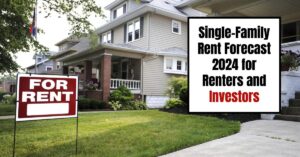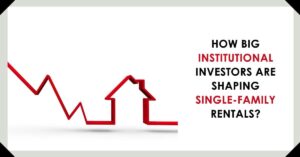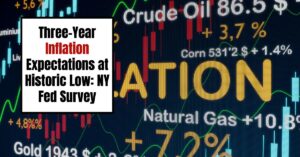Single-family rents continue their upward climb in 2024, leaving renters across the US wondering just how high the ceiling is. It's a question on everyone's minds: Will this trend continue, or are we due for a cooldown? Let's dive into the current state of single-family rentals, examine the factors driving this market, and explore potential scenarios for the remainder of 2024.
Single-Family Rents in 2024
Current State of the Market: Steady Growth, Regional Variations
As of July 2024, the typical asking rent for a single-family home in the US reached $2,294, representing a 0.4% increase compared to the previous month — Zillow. This figure marks a 4.7% surge from July 2023 and a significant 40.1% leap since the onset of the pandemic.
While the overall trend points towards growth, regional variations are apparent. Some major metropolitan areas witnessed a slight dip in single-family rents month-over-month:
However, the broader picture reveals that 49 out of the 50 largest metro areas experienced year-ago increases. The most substantial annual jumps were concentrated in the Midwest:
- Cleveland: 8.6%
- Cincinnati: 7.8%
- Indianapolis: 7.5%
- Columbus: 7.2%
- Louisville: 7.2%
Factors Driving Single-Family Rent Increases
Understanding the forces behind these rent hikes is crucial for both renters and investors. Several key factors are contributing to the upward pressure on single-family rents:
- Housing Shortage: The US continues to grapple with a housing shortage, particularly in the single-family market. Low inventory levels, driven by years of underbuilding and increased demand, give landlords more leverage to raise rents.
- Rising Interest Rates: The Federal Reserve's efforts to combat inflation have led to significantly higher mortgage rates. This has pushed homeownership out of reach for many potential buyers, increasing the demand for rentals and putting upward pressure on single-family rents.
- Inflation and Economic Uncertainty: Persistent inflation is impacting costs across the board, including property taxes, maintenance, and insurance for landlords. These increased operating expenses are often passed on to renters in the form of higher rents.
- Demographic Shifts: The largest generation in US history, Millennials, are increasingly seeking out the space and amenities offered by single-family homes as they enter their prime family-raising years. This surge in demand further contributes to rising single-family rents.
- Remote Work Flexibility: The rise of remote work, accelerated by the pandemic, has allowed for greater geographic flexibility. Many renters are now choosing single-family homes in suburban or even rural areas, driving up demand and rents in those markets.
Forecast for the Remainder of 2024: Cautious Optimism or Continued Climb?
Predicting the future of any market is a complex endeavor, but by analyzing current trends and potential influencing factors, we can outline possible scenarios for single-family rents in the latter half of 2024:
Scenario 1: Moderate Growth Continues
This scenario assumes that current trends largely persist. Factors supporting this outlook include:
- Continued Housing Shortage: The housing shortage is a long-term issue unlikely to be resolved quickly.
- Elevated Interest Rates: While a sharp increase in interest rates is not anticipated, they are expected to remain relatively high, continuing to impact affordability for homebuyers.
- Steady Demand for Single-Family Homes: Demand for the space and amenities offered by single-family rentals, especially from Millennials starting families, is projected to remain strong.
Scenario 2: Growth Slows, Potential for Stabilization
Factors that could contribute to this scenario include:
- Easing Inflation: Should inflation continue to cool, the pressure on landlords to increase rents to cover expenses may lessen.
- Increased Housing Supply: Even modest increases in new construction, particularly in the single-family market, could help alleviate some pressure on single-family rents.
- Shifting Renter Preferences: If economic uncertainty lingers, some renters might opt for more affordable options like smaller units or shared housing, potentially impacting demand for single-family rentals.
Scenario 3: Unforeseen Economic Factors
The real estate market is sensitive to broader economic conditions. Unforeseen events, such as:
- Recession: A significant economic downturn could lead to job losses and decreased demand for rentals, potentially causing single-family rents to stagnate or even decline.
- Changes in Government Policy: New legislation or regulations related to housing, interest rates, or taxation could have unpredictable effects on the rental market.
Navigating the Single-Family Rental Market in 2024
Whether you're a renter searching for your next home or an investor evaluating opportunities, understanding the dynamics of the single-family rental market is paramount.
Tips for Renters:
- Start your search early: Due to low inventory, it's crucial to begin your search well in advance of your desired move-in date.
- Be prepared to be flexible: Consider expanding your search geographically to include areas with potentially lower rents.
- Negotiate with landlords: Don't be afraid to negotiate lease terms, such as rent amount or length of lease, especially in a competitive market.
Tips for Investors:
- Conduct thorough market research: Identify areas experiencing high demand for single-family rentals and carefully analyze potential return on investment.
- Factor in rising costs: Account for potential increases in property taxes, insurance, and maintenance when calculating expenses and setting rental rates.
- Stay informed about market trends: Continuously monitor economic indicators, housing market data, and rental trends to make informed investment decisions.
Soaring rental rates are transforming the single-family rental market in 2024. Yet, underlying economic forces offer potential for both renters and investors who can navigate these changing conditions.
ALSO READ:
- Good News for Renters? Single-Family Rent Growth Slows Down
- Housing Market Trends: How BIG Investors Are Shaping Single-Family Rentals
- Single Family Rental Homes vs Multi-Family Investing in 2024
- Housing Market 2024: Key Predictions for the Remainder of the Year
- Midwest Housing Market: The Unexpected Trends You Won't Believe
- Real Estate Forecast Next 5 Years: Top 5 Predictions for Future
- Housing Market Predictions for the Next 2 Years
- Housing Market Predictions for Next 5 Years (2024-2028)
- Will the Housing Market Crash in 2025?











